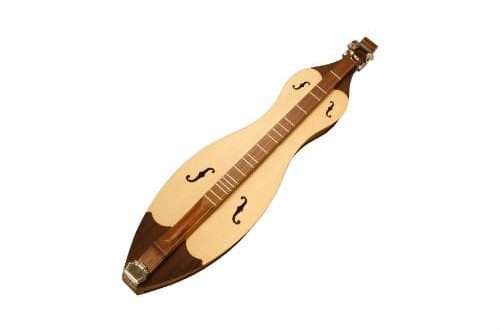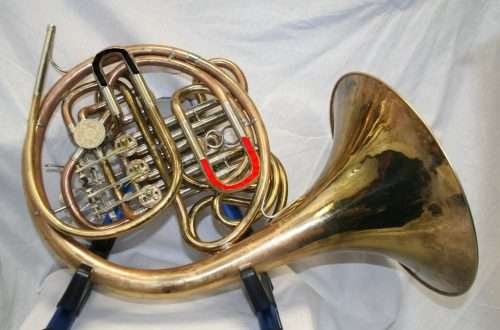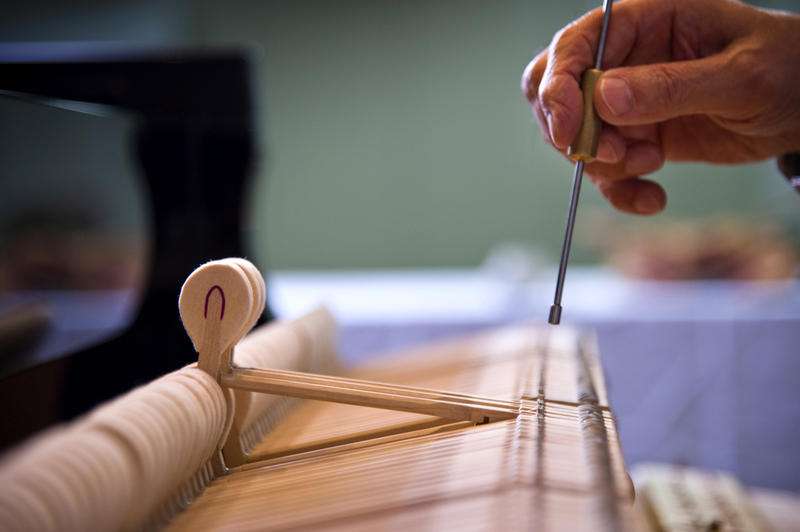
How to tune a piano
Contents
All pianos are complex mechanisms invented centuries ago. Throughout history, their structure has not changed fundamentally. Harmonious playing with notes that correspond to their tuning is the main tuning criterion.
The state of the strings is affected by the environment, the state of the structural elements of the product.
Knowledge of these factors helps to solve tuning problems that require special tools.
What will be required

Piano tuning is performed by the following set:
Key . Essential tool for piano tuning. Acts by rotating the pin (virbel). The more edges, the more efficient the process. It is easier to set up a tool with thin pins with tetrahedral models. Keys with a large number of faces are classified as tuning. In a professional product, the conical hole narrows. Thanks to him, the device is securely mounted on pins of various parameters. Hole size:
- in Soviet instruments – 7 mm;
- in foreign – 6.8 mm.
Some wrenches have interchangeable heads. It is desirable if they are unscrewed from the handle, and not in the area of \u200b\u200bthe base of the key, since in the latter case spontaneous unwinding and play during setup is possible.
Handle shapes:
- g-shaped;
- t-shaped.
Damper wedges that dampen strings that are not tuned. Made of rubber, placed between the strings. Some are mounted on a wire handle to work in hard-to-reach places.
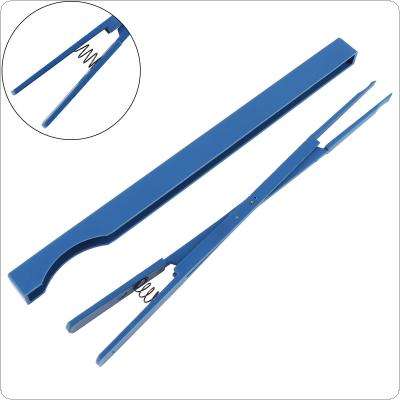
Reverse tweezers . Mutes short strings when it is not possible to insert a damper. The tweezers are inserted between the malleus cuttings.
Cloth tape that silences several strings . Time saving method.
Tuning fork . It is classical and electronic. Classical represents the note “La” of the first octave.
Step-by-step algorithm of actions
Having decided to set up the piano yourself at home, you must first open the top cover and find the latches. They are located in the corners of the front vertical panel at the top. Having moved them, it is necessary to remove the panel and open the keyboard.
Most piano notes are sounded by vibrating several consonant strings. Consonances are called “chorus”. Inside it, the strings are tuned relative to each other and relative to the intervals of other choirs.
The strings cannot be tuned individually. Notes must be tuned over a wide range of sounds in order to harmonize in the harmonies of the keys. The effect of beating in the sound of two sound sources occurs when these parameters do not match.
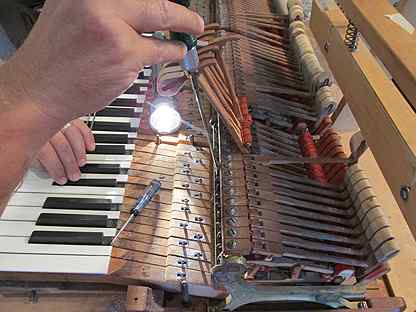
On this basis, the setting is made:
- You should start with the note “la” of the first octave. It is necessary to choose a string in the chorus that has the smallest non-working distance and the largest working distance. It is less distorted than others and is easier to tune. As a rule, these are the first strings of the choir.
- Having selected it, you should muffle the rest of the strings of this choir with damper wedges that are inserted between the strings. It is effective to use for this a cloth tape inserted between the muffled strings.
- After that, the free string is tuned by means of a tuning fork. The main thing is to exclude beats. Their interval must exceed 10 seconds.
- After that , the intervals of the first octave are “tempered”, based on the sound of the first string . The number of beats per second for each interval is different. The task of the tuner is to listen carefully to him. Other strings of the central octave are tuned during the removal of the plugs. At this point, it is important to build unisons. After setting the central octave, work is carried out from it with the rest of the notes in all octaves, sequentially up and down from the center.
In practice, tuning is done by winding the key on the peg.
All the time you need to check the sound by pressing a key. The hardness of the keys is also important to control. This technique is the most common. The process is quite complex, forcing many details to be taken into account. Only professionals can make adjustments that will last a long time.
In which case it is better to contact specialists
A lack of personal experience is a good reason to turn to a professional tuner.
Otherwise, problems may occur, the elimination of which will require significant effort and expense.
How much does it cost
- Without raising the system – from 50$.
- Work on raising the system – from 100$.
- Work on lowering the system – from 150$.
Common mistakes
A case that requires special skills and technical equipment is difficult and hardly accessible to a person even with perfect hearing, but without skills. Bad sound in different registers is the result of mistakes at the beginning of tuning. They are usually amplified near the edges of the keyboard range.
The sounds of neighboring keys differ in volume and timbre – the result of insufficient attention to the keyboard mechanism. Detuning occurs if mechanical defects are not taken into account . Therefore, it is often better to entrust the process to a professional than to tune the piano yourself.
FAQ
How often to tune piano?
After purchase, it is configured twice within a year. Used ones will also have to be adjusted after transportation. With a gaming load, you need to adjust more than once every six months. This is written in the passports of musical instruments. If you don’t tune it, it will wear out on its own.
How long does it take to tune a piano?
Adjustment of the tuning pegs, in the absence of tuning for several years, will require multi-level work with the system of the entire instrument, the temperature zone and the registers. Several approaches may be needed. An instrument tuned regularly requires one and a half to three hours of work.
How to save the tuning of piano?
Optimal indoor climate avoids frequent adjustments:
temperature 20°C;
humidity 45-60%.
Can customization materials be produced for piano tuning?
Rubber wedges can be made from a school eraser. Cut it diagonally and stick a knitting needle.
Should i tune the synthesizer?
No, no tuning is required.
Conclusion
Determining the scale of a piano is easy. His notes should sing cleanly and evenly, and the keyboard should give a soft, elastic feedback, without the keys sticking. It is better to entrust the work with the keys to a specialist, since experience is needed in this matter.



